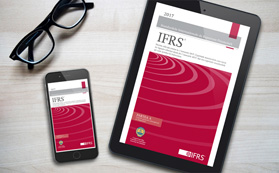Amendment and completion of the Methodological Rules on the use and completion of the State Treasury payment order and the electronic multiple payment order
Numărul 36, 13-19 sep. 2023 » Finance & Economics
Order of the MF no. 2538/2023 for the amendment and completion of the Methodological Norms regarding the use and completion of the payment order for the State Treasury (OPT) and the electronic multiple payment order (OPME), approved by Order of the Minister of Public Finance no. 246/2005 was published in the Official Gazette no. 830/14.09.2023.
The main amendments/completions to the Methodological Norms regarding the use and completion of the payment order for the State Treasury (OPT) and the electronic multiple payment order (OPME):
I. The "Beneficiary" column of the "Payment order for the State Treasury (OPT)" form is completed as follows:
For the fiscal/budgetary obligations that are paid to the component budgets of the general consolidated budget in the budgetary revenue accounts, in the single accounts or in the available accounts in which the National Agency for Fiscal Administration collects/recovers fiscal/budgetary obligations, the following is entered: "general consolidated budget".
The phrase "collect/recover" means the extinguishment of fiscal/budgetary obligations through voluntary payment, compensation, enforcement and other methods expressly provided by law.
Therefore, on the PO, under the heading "beneficiary" there is no longer a distinct mention of "state budget", respectively "the budget of social insurance and special funds".
For payment obligations to public institutions, respectively for payments requested by public institutions in accordance with the legal provisions in force, other than those above, it is entered the name of the beneficiary public institution.
For excise duties that are paid by the buyer on behalf of the supplier, before the actual delivery of the excisable products, it is entered the name of the supplier registered as an excise duty payer.
II. The column "Fiscal identification code" in the "Payment order for the State Treasury (OPT)" form is completed as follows:
For the fiscal obligations provided for in point 1, it is entered the "fiscal identification code of the taxpayer"; in the case of the tax on income from wages owed by the secondary offices, the fiscal identification code of the secondary office is entered.
Exception: it is entered the fiscal identification code of the fiscal body subordinate to the National Administration for Fiscal Agency, for the fiscal/budgetary obligations provided for in point 1, for which the account holder is this.
The fiscal identification code of the supplier registered as an excise duty payer is mentioned, for the excise duties paid by the buyer on behalf of the supplier.
For payments made from accounts opened at the State Treasury for other purposes (for example: paying into the accounts of economic operators opened at the State Treasury the sums representing the value of purchased goods, services rendered or works executed for public institutions; transferring the balances of the availability accounts of economic operators in bank accounts; transfer of amounts related to salary rights to card accounts opened at banks in the name of employees of public institutions; payments regarding the distribution of amounts collected through the capitalization of movable and immovable assets from the foreclosure process; transfers related to state securities intended for the population within the Tezaur Program etc.), it is entered:
- the fiscal identification code of the beneficiary of the amount, a legal person, in the situation where the beneficiary of the amount is fiscally registered in Romania;
- the personal numerical code, for payments to accounts opened at the State Treasury;
- the fiscal identification code of the head office of the credit institution in Romania where the beneficiary of the amount has opened his account or the fiscal identification code assigned to the State Treasury (8609468), in the situation where the beneficiary of the amount is not fiscally registered in Romania;
- the personal numerical code or the fiscal identification code of the central credit institution in Romania where the beneficiary of the amount has opened his account according to the decision of the payer, if the payment is made from accounts opened at the State Treasury units to natural persons in bank accounts.
III. "Beneficiary IBAN Code" column
Enter the IBAN code related to the budget revenue/expenditure account or the available account, as the case may be, in which the amount is paid, opened at the State Treasury units or the IBAN code of the account of the beneficiary of the amount, opened at the credit institution.
IV. The column "Representing" from the form "Payment order for the State Treasury (OPT)" is completed as follows:
- for the amounts representing budget revenues, enter the name of the paid budget obligation
- for the amounts provided for in point 1, enter the "general consolidated budget", as well as any other information that the payer considers relevant;
- in the case of the other categories of amounts to be paid, the economic nature of the payment is entered, and in the case of payments to beneficiaries who are not tax registered in Romania, other relevant information can also be entered (for example, their fiscal identification code from the country in which they are registered for fiscal purposes).
(Copyright foto: 123RF Stock Photo)






Zeița Thalia inspiră formule inovative în arta spectacolului
Ample programe științifice și culturale dedicate marilor personalități ale istoriei naționale
Ziua Culturii Naționale, prilej de celebrare a celor mai de seamă valori din patrimoniul românilor de pretutindeni
Împreună, sub semnul emblematic al bradului și colindelor
Târgul „Gaudeamus”, ediția 2024, o reușită reîntâlnire a cărții cu cei care o prețuiesc
Casele au amintiri. O stradă-muzeu în apropierea kilometrului 0 al Capitalei
Începe restaurarea unei bijuterii istorico-arhitecturale, Biblioteca Batthyaneum din Alba Iulia
Legătura dintre știință și artă – via învățământ | Aula Magna a Politehnicii, gazdă a spectacolelor de teatru